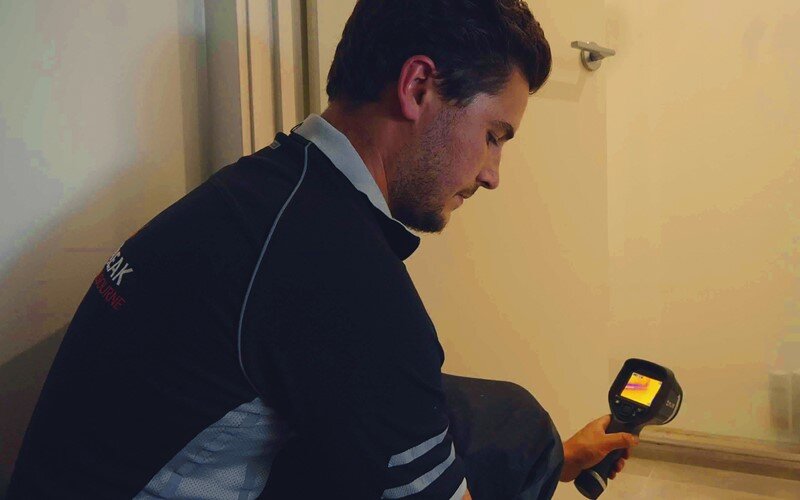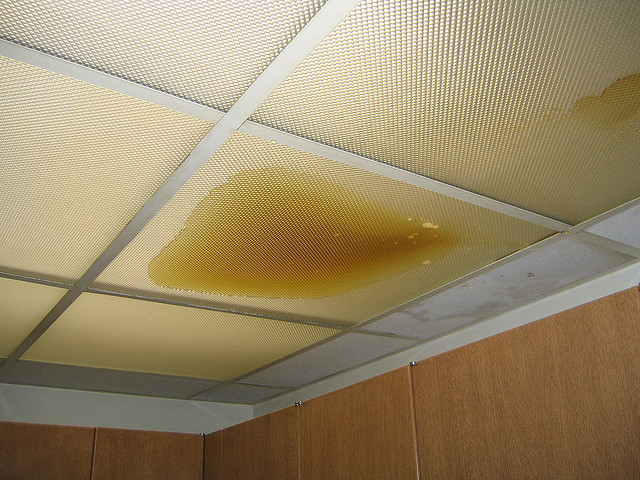Are you currently trying to locate related information on Detecting hidden plumbing leaks?

Early detection of dripping water lines can alleviate a prospective calamity. Some small water leakages may not be visible.
1. Check Out the Water Meter
Every house has a water meter. Checking it is a proven manner in which helps you uncover leaks. For beginners, shut off all the water resources. Make sure no one will certainly flush, make use of the faucet, shower, run the cleaning maker or dish washer. From there, most likely to the meter and also watch if it will change. Since no person is using it, there need to be no movements. That shows a fast-moving leak if it moves. If you discover no adjustments, wait a hr or two and inspect back once again. This indicates you might have a slow-moving leakage that can even be underground.
2. Inspect Water Consumption
Assess your water bills as well as track your water consumption. As the one paying it, you should notice if there are any kind of disparities. If you find sudden changes, despite your intake coinciding, it means that you have leakages in your plumbing system. Keep in mind, your water bill must drop under the same array each month. A sudden spike in your costs indicates a fast-moving leakage.
Meanwhile, a stable boost on a monthly basis, despite having the same habits, shows you have a slow leak that's also slowly escalating. Call a plumber to thoroughly inspect your home, specifically if you really feel a warm area on your flooring with piping beneath.
3. Do a Food Coloring Examination
When it comes to water intake, 30% originates from toilets. Test to see if they are running effectively. Drop specks of food shade in the tank and also wait 10 minutes. There's a leakage between the container as well as dish if the color in some way infiltrates your dish during that time without flushing.
4. Asses Exterior Lines
Don't neglect to check your outside water lines as well. Examination faucets by attaching a garden hose pipe. Must water leak out of the link, you have a loosened rubber gasket. Change this and also make certain all connections are limited. If you've got an automatic sprinkler, it will aid get it professionally took a look at and also maintained yearly. One little leak can waste lots of water as well as spike your water costs.
5. Examine as well as Assess the Circumstance
House owners need to make it a practice to inspect under the sink counters and also even inside cupboards for any type of bad odor or mold and mildew development. These two red flags show a leak so prompt attention is needed. Doing regular examinations, even bi-annually, can save you from a major problem.
If you know your home is currently old, keep a careful eye on your heating systems, hoses, pipes etc. Look for discolorations and weakening as most pipes and home appliances have a life expectancy. They will certainly likewise naturally wear away due to tear and wear. Don't wait for it to rise if you think dripping water lines in your plumbing system. Call a professional plumber immediately so you do not wind up with a horrible mess in your house.
Early detection of dripping water lines can mitigate a potential disaster. Some tiny water leaks may not be visible. Examining it is a surefire means that helps you find leaks. One little leak can lose tons of water and also surge your water bill.
If you think leaking water lines in your plumbing system, don't wait for it to escalate.
How to Know If Your Home Has a Hidden Leak
Water Meter Reveals Inexplicable Water Usage
If you’d like to test whether or not there’s a leak somewhere in your home, you can do this using your water meter. Here is how to conduct the test:
Don’t use any water in your home for at least 30 minutes; this also means not turning on faucets or water-using appliances.
Go outside, and check your water meter for activity.
If your water meter shows that there was activity, even though no one was using any water, this proves that there is a leak in your home.Visible Mold or Mildew Growth
Leaks behind walls create moist, dark environments that allow mold and mildew to grow and thrive. Eventually, you might see mold growth forming on the wall closest to a hidden leak.
If mold is growing in an area that receives a high amount of moisture, such as a bathroom, it may simply be an indication that better ventilation is needed. However, if you see mold growth on a wall or the ceiling in an area where you would not expect, you probably have a hidden leak.
Musty, Mildew Odor
Sometimes you might not be able to see the mold or mildew that is growing as a result of a leak. However, the smell can give the problem away just as easily. If you catch a whiff of something musty, there’s a good chance that old water is collecting somewhere in your home that you can’t see.
Stained/Warped Walls, Ceilings, or Floors
When your home soaks up water, a variety of red flags can become visible, including ceiling stains, bubbling drywall, warped walls, and sagging floors. While these issues can be caused by excess humidity, they can also be signs that a pipe or plumbing connection has started leaking behind your walls.
Inexplicably High Water Bill
After a while, you get a general sense for what your water bill should be. If you own a pool or sprinkler system, your bill will tend to be higher during summer. However, if you receive a water bill that seems especially high, and you can’t figure out what caused it, then you may have a hidden leak somewhere that’s increasing your bill.
https://www.plumbingjoint.com/blog/2019/july/how-to-know-if-your-home-has-a-hidden-leak/

I discovered that post about Finding hidden leaks when doing a search on the search engines. Enjoyed our blog? Please share it. Help others find it. Bless you for your time. Kindly come by our site back soon.